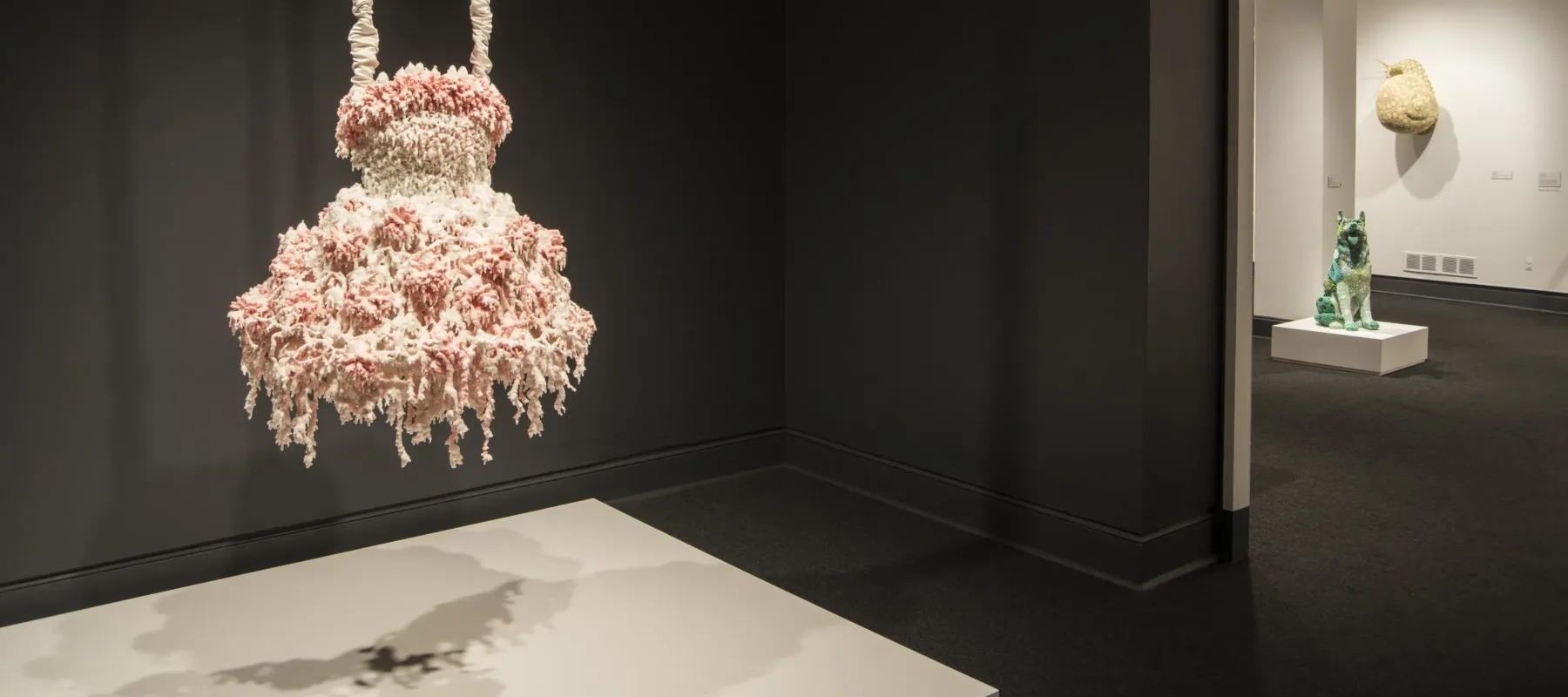NMWA’s exhibition Rodarte celebrates the innovative American fashion house, founded by sisters Kate and Laura Mulleavy. The show—open until February 10, 2019—is a survey of the designers’ visionary concepts, impeccable craftsmanship, and impact on the fashion industry. The dresses on view share visual appeal and many common threads with works in NMWA’s collection. From technique to theme, dive into five innovative works by artists at NMWA in this series, “Connecting the Threads.”
Eclectic Experimentation
Contemporary American sculptor and photographer Petah Coyne (b.1953) is critically acclaimed for her use of unconventional materials in her poetic pieces. Coyne renders human hair, scrap metal, wax, taxidermy, mud, chicken-wire, velvet, and more into haunting works with incredible emotional range. “I gather materials everywhere I go,” she has said. “Materials are a language.”
In their early collections, Rodarte drew acclaim for their use of unconventional materials that fused the dressmaking and art-making processes. Layering metallic ribbons, eyelash yarn, wire, chainmail tube, leather, Swarovski crystals, silk tulle, and more, their works upended conventional fashion practices by letting their material choice determine each silhouette.
Masters of Craft
Her complex and layered sculptures require Coyne to do it all: she sews, she waxes and wires flowers, she paints, she manipulates wire, and she learned a Victorian method for making jewelry out of human hair. Coyne even worked with a chemist to “patent an archival wax formula that she uses in melted form, like a pigment. It has become her signature.” This is seen in Coyne’s Untitled #781 (1994), part of NMWA’s collection (not currently on view).
Rodarte’s early works also reveal a rapid command of their craft. Entirely self-taught, the Mulleavys mastered one technique after another, skillfully combining them in subsequent collections. Their approach to design is dictated by the textural qualities of their fabrics and driven by process and materiality.
Embodying Contradictions
At the heart of Coyne’s work is dissonance—an exploration of the fine lines between lushness and decay, beauty and grotesqueness. In Untitled #781, the pink-and-white sculpture alludes to a tutu, a birthday cake, or a party dress—symbols of girlhood and innocence—but it also appears to be curdling before the viewer’s eye. The piece seems to float, but is actually quite heavy, constructed over a wire-and-steel core. Throughout her work, Coyne thumbs these fine lines while also exploring the larger theme of life and loss at the core of her creations.
The Mulleavys are also interested in juxtaposing ideas in their collections. Through a complex layering of techniques that simultaneously build and destroy the materials, they transform their works into hybrid creations—both perfect and ruined. “We are attracted to imperfection and to beauty and chaos,” Kate Mulleavy has said. This dissonance has surfaced in many Rodarte designs, including their work for the costumes in the film Black Swan. “We were inspired by the idea of transformation, specifically the dichotomy between perfection and decay.”

